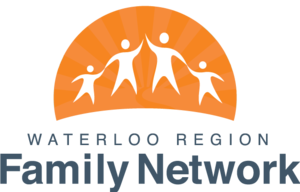
We collect basic website visitor information on this website and store it in cookies. We also utilize Google Analytics to track page view information to assist us in improving our website.
From time to time, the Waterloo Region Family Network (WRFN) is asked to distribute information on behalf of third parties. WRFN provides general information to self-advocates and families of children with special needs. The information provided on this website is not a recommendation, referral or endorsement of any resource, therapeutic method, or service provider. WRFN is not responsible for any information or services provided by third parties. You are urged to use independent judgment when considering any resource.
This public review will be your first opportunity to provide feedback on our draft model standard for the built environment - accessibility. A second opportunity will be provided at a later date before the standard is published.
As part of this public review, our technical committee welcomes your initial feedback. Input from Canadians is vital to the development of accessibility standards that remove and prevent barriers.
As you know well, the principle of “Nothing without us” is at the core of everything we do. This means that we include people with disabilities in every step of our work. As a result, our technical committee is composed of over 50% of persons with disabilities. We lean on the knowledge and lived experience of people with disabilities and other experts. We believe this leads to better results for all Canadians.
There are common areas where people with disabilities may encounter barriers in the built environment. This standard differs in many ways from other standards. It focusses on equity-based requirements that go beyond minimum technical requirements.
The built environment has many elements. To ensure a fulsome document, Accessibility Standards Canada has made the decision to draft it in two phases. The first phase of the public review will run until Saturday, January 7, 2023 at 23:59 (EST).
This public review of the draft standard covers the following topics:
-exterior and interior paths of travel
-building entrances and access to storeys
-ramps and curb ramps
-elevators
-stairs
-doorways and doors including power door operators
-controls
-passenger loading zones and access aisles
-washrooms and universal washrooms including showers
-signs and wayfinding
-illumination
-assistive listening systems
-emergency notification systems
-fire protection and refuge
You can consult the draft standard by clicking here to go to our website.
You are invited to provide your feedback on the draft standard using one of the following means:
By completing the online form and submitting your feedback directly through our website
By downloading the fillable form in a PDF or Word format and sending it to us by email, along with any related files
By submitting your comments in text, audio, or video format
All the necessary instructions on how to send us your feedback can be found on our website. The Standards Team contact information is also provided should you need any assistance with this public review process or have any questions.
Please know that in the future second version of the standard, the technical committee will aim to make sure it serves as many persons with disabilities as possible.
During that second public review, the technical committee intends to:
-update and expand existing requirements
-examine the needs of persons from more disability communities, including persons who are neurodiverse and persons with environmental sensitivities
-develop parking requirements
-add diagrams
-include information to help readers understand how the Standard removes and prevents barriers in the built environment for everyone, including persons with disabilities
We are proud of what our technical committee members have accomplished. Through them and with your feedback, we are contributing to a more inclusive and barrier-free Canada.
We welcome your expertise and look forward to receiving your feedback!
Chief Executive Officer of Accessibility Standards Canada, Philip Rizcallah